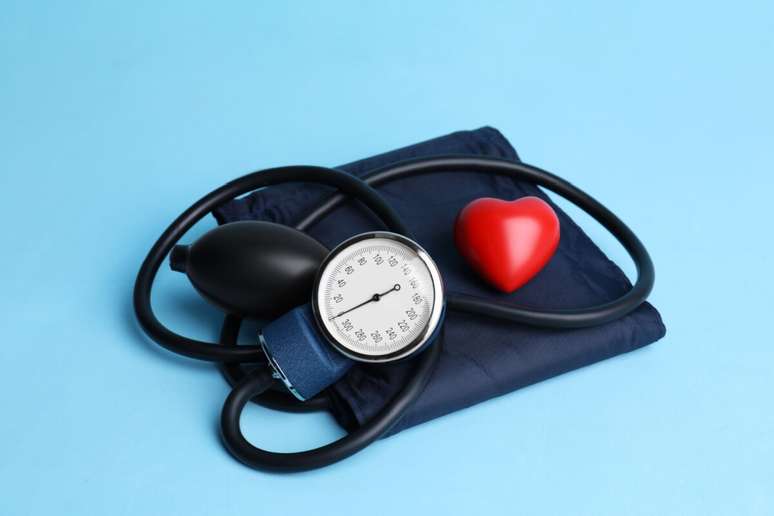According to the Ministry of Health, mother-to-child transmission of HIV was responsible for about 77.9% of reported cases in children under 13 in 2020
Between 2010 and 2020, the Brazil showed a nearly 70% reduction in the detection rate of AIDSsyndrome caused by the virus HIVin children under 5 years of age. However, the country continues to have a high number of pregnant women infected with HIV, which means that the vertical transmission alert remains active. In Red December, of mobilization in the fight against AIDS, there are still other challenges to remember, such as the importance of having an adequate diagnosis and the immediate start of treatment.
According to the Epidemiological Bulletin of the Health Surveillance Secretariat of Ministry of Health mother-to-child transmission as an infant was responsible for about 77.9 percent of reported AIDS cases in children under 13 in 2020.
Again according to the bulletin, over a ten-year period, there has been a 30.3% increase in the HIV detection rate in pregnant women, which can be explained, in part, by the expansion of prenatal diagnosis and the improvement of surveillance in the prevention of mother-to-child transmission of HIV.
The director and representative of Joint United Nations Program on HIV/AIDS (UNAIDS) in Brazil, Claudia Velasquez, explains that the country has the conditions to eliminate transmission, but the barriers to accessing prevention through prenatal and postnatal care affect the complete care of pregnant or breastfeeding women.
“An important strategy for coping with this type of transmission is PrEP (HIV pre-exposure prophylaxis) for pregnant women. However, not all municipalities offer yet.”
The PrEP cited by the director is a method of preventing infections that consists of the daily consumption of a combination of two drugs, tenofovir and emtricitabine, in a pill that allows the body to be prepared to face a possible contact with HIV. For pregnant women, the drug is used in cases of risk of contamination during pregnancy.
Infectologist Rodrigo Molina, of Brazilian Society of Infection (SBI), adds that PrEp is not the only treatment. Added to this are Post-Exposure Prophylaxis (PEP), after having had contact with the virus, and antiretroviral therapy, which can significantly prolong the life of people infected with HIV and reduce the chances of transmission. “All provided by the Ministry of Health,” she says.
However, access to these services and treatments is not yet achieved by everyone. In 2021, according to the Oswaldo Cruz Foundation (Fiocruz), Brazil has recorded more than 135,000 cases of HIV infection in children and young people up to 24 years of age. In the range of 2 to 17 years, only 5,875 were using antiretroviral therapy.
“In Brazil, it is estimated that 27% of people living with HIV still do not receive the antiretroviral treatment that can save their lives. Much more needs to be done in the mechanisms that allow diagnosis in the right time and immediate adherence to antiretroviral care and health monitoring,” explained Claudia.
stigmata
Discrimination and stigma around the disease are also some of the major barriers to eliminating HIV transmission in children and adolescents.
In addition to the fear of exposure impacting mental health, the dehumanized treatment of outdated professionals and the lack of adaptation of public policies to the specific needs of younger populations also play a role, assesses Claudia.
“Information about people undergoing HIV treatment and medical follow-up who have an undetectable viral load in their bodies and, therefore, do not transmit the virus to other people, reduces stigma and can help young people cope with relationship challenges,” explains Claudia.
The UNAIDS representative also underlined the importance of “adapted communication” when informing children or adolescents infected with HIV by vertical transmission about their condition.
“Childhood must be respected at every stage, each stage has a limit to understanding. For adolescents and young people it is even more important to start from their perspectives, using playful and/or technological tools that best approach their individual, collective realities and that can be shared by them, in their own language and from an anti-discrimination perspective, which raises awareness and empowers them through information,” she says.
How does prenatal care help prevent HIV?
Prenatal diagnosis allows you to perform all the protocols for pregnancy, delivery and the newborn that reduce the risk of HIV infection to less than 2%, through the inclusion of treatments, such as PrEP itself or others. Without treatment, the risk of transmission becomes 30%.
The 2020 Birth in Brazil study, conducted by the Fiocruz Women, Children and Adolescents Research Group, shows that although antenatal care reaches more than 90 percent of pregnant women in the country, most of them do not perform the minimum number of recommended queries.
The difference is accentuated in the Northern and Northeastern regions, where the inadequacy of the number of consultations is respectively 42.7% and 34.3%.
The recommendation of the Ministry of Health is to start consultations at least until the 12th week of pregnancy and at least eight throughout the pregnancy. However, 46% of Brazilian pregnant women start prenatal care late.
All pregnant women should be tested for HIV, with the HIV rapid diagnostic test and/or HIV serology. The preference is for it to be performed in the first trimester and repeated in the third trimester. Without up-to-date prenatal care, diagnosis can occur later or even during labor.
Detection of the virus during prenatal care allows treatment to be started earlier, preventing mother-to-child transmission. There is also a complete follow up from pregnancy to breastfeeding. Early diagnosis and treatment also help control the HIV virus and not turn it into AIDS.
“She will be able to have a normal life, but with the use of specific HIV drugs. She will also be warned that this mother will not be able to breastfeed, even if she has an undetectable viral load,” explains Rodrigo Molina. The child, in case vertical contamination occurs, will also have to follow different medications so as not to acquire the disease and remain undetectable.
Increased infection and mortality rates in adolescents and young adults
The director of UNAIDS points out that, although in the last ten years in Brazil there has been a reduction in the rates of HIV infection and death from AIDS among children under 14, in the same period, the same rates have increased among adolescents and young people aged 15 to 19 and 20 to 24 years old.
“What draws attention is the racial, economic and social profile. Black teenagers and young people, including boys and girls, have been hit hardest by new AIDS infections and mortality in the country,” he says.
In September this year, the Ministry of Health updated the Clinical Protocol and Treatment Guidelines (PCDT) on HIV Pre-Exposure Prophylaxis (PrEP) regarding treatment through the Unified Health System for people over the age of 15 year old sexually active.
“It’s a step forward, but we still need to focus more on structural and societal issues, such as raising awareness of HIV-combination prevention among adolescents and addressing situations of stigma and discrimination affecting this population,” she says.
Inequalities are still amplified when it comes to young transvestites and trans women, people living on the street or deprived of their liberty.
🇧🇷The best content in your email for free. Choose your favorite Terra newsletter. Click here!
Source: Terra
Ben Stock is a lifestyle journalist and author at Gossipify. He writes about topics such as health, wellness, travel, food and home decor. He provides practical advice and inspiration to improve well-being, keeps readers up to date with latest lifestyle news and trends, known for his engaging writing style, in-depth analysis and unique perspectives.





-1iukdqb6yt84h.jpg)


